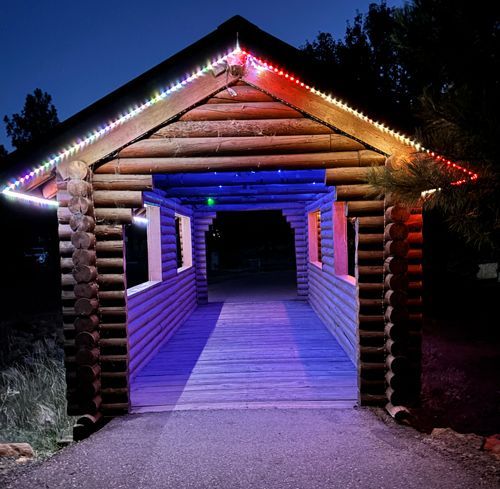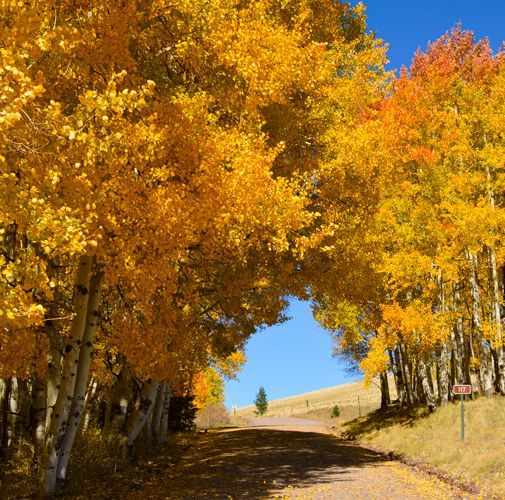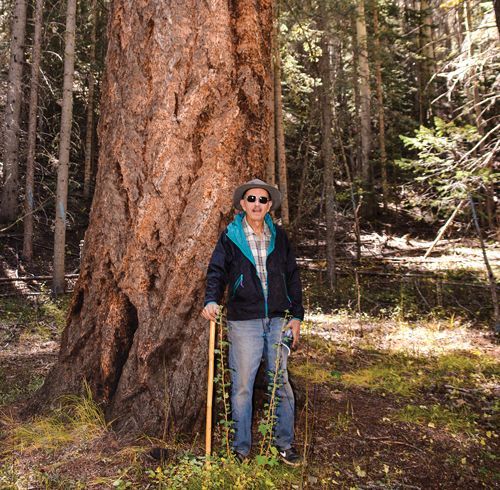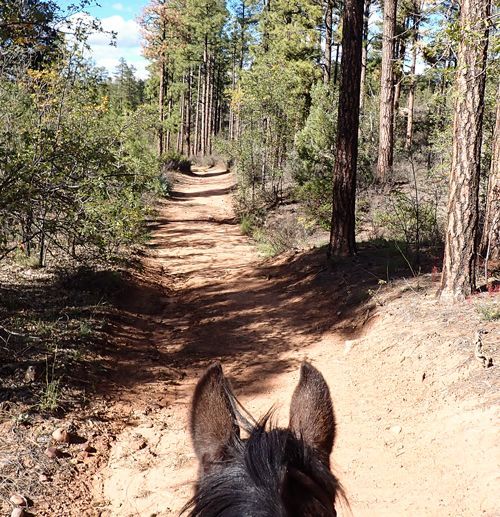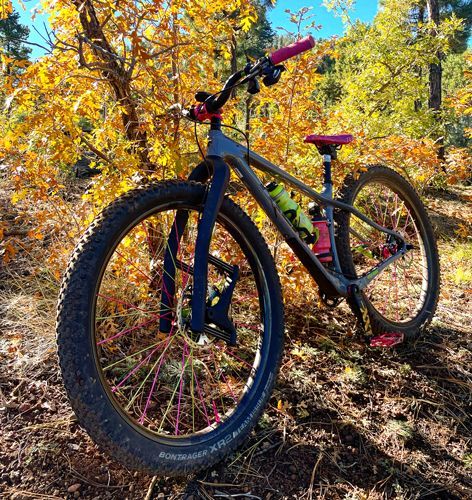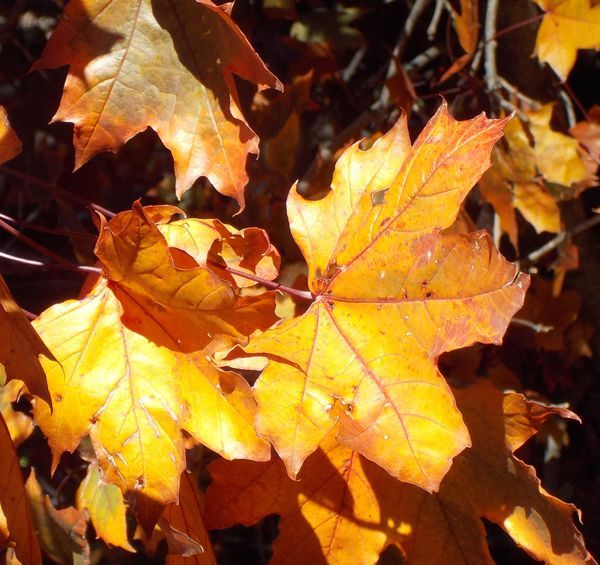Fall in the White Mountains and all things migrating...
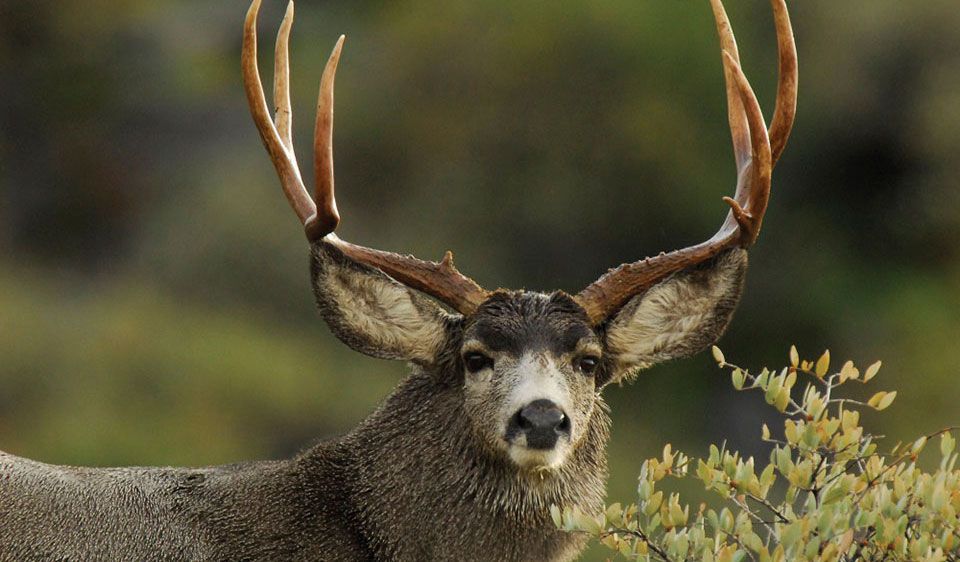
By Dan Groebner
Here today and gone tomorrow. That will be the theme of more and more critters as we approach another White Mountain fall season. Many of us consider ourselves blessed with four real seasons, even if it means dealing with winter storms dumping a foot or two of wet slushy snow (well, maybe). But the wildlife that must deal with the full brunt of White Mountain weather has to make a decision, so to speak, on weather to stick around and adapt to the winter conditions or high tail it out of here to warmer climes in the winter.
If you really think about it, why would any bird decide to fly all the way up to the Canadian arctic for their shortened summer only to have to turn around in a couple of months and return south to avoid their brutal winters of freezing temperatures and short days?
But large movements going north and south aren’t the only type of migrations. Here in the White Mountains the large wild ungulates regularly move up and down in elevation, primarily when forced by deep snow that covers the grass, forbs and brush they are feeding on. Along the Mogollon Rim, this means that some deer and elk move south down off the rim onto the White Mountain Apache Reservation while others migrate north where the elevation drops but more slowly.
Deer don’t form the large “deer yards” of dozens of them concentrated in small areas like up in Minnesota, Michigan, and Wisconsin where they can keep escape trails maintained within areas of good food and cover. In Arizona, deer, elk, and bighorn sheep can easily find lower elevations with milder weather and more food available.
Fish migrations are pretty limited in Arizona, you could say these days, but many species have to make short movements to special habitats to spawn and lay eggs, so most of the migration talk in Arizona centers on the bird family. And Arizona boasts a wide variety of migration strategies displayed by our avian residents.
If a bird migrates or not, and how they make the move, is not actually a conscious decision made by the birds. Successful migrations are a result of many years of adaptive evolution that results in the most productive strategy winning out producing the most offspring, which then pass on those successful traits to their offspring.
That doesn’t mean that all animals of the same species migrate in exactly the same way, or that they migrate at all. Mother Nature is famous for usually producing more wildlife offspring that can be supported, including some that might behave a little differently or have just a little different physical adaptation. They’re the ones that don’t read the textbooks or journal publications!
Those slight differences in the wildlife population make sure that some animals are prepared to survive quickly changing conditions. The survivors that are adapted to the conditions then pass on their behaviors and genes to their offspring. But there is definitely a limit to how quickly they can adapt to changes.
So, it is pretty obvious why some birds migrate out of this area in the winter, but the question remains, why do some birds remain here all winter long and never migrate? Most of the birds remaining overwinter are either predators like owls or have stored food in the fall to get them through the winter, like the acorn woodpeckers.
Nuthatches, chickadees, woodpeckers, and jays have a knack for finding seed sources and insects overwintering in the bark of trees. Even though most lakes and streams remain open through the winter, osprey will migrate to Mexico and the Caribbean and feed in the mangrove swamps along the coast.
If we have a relatively mild winter, the lakes around here do not freeze over and provide much needed resting areas for migrating waterbirds, which then attracts dozens of bald eagles from the northern US and Canada going only as far south as they have to. So, the bald eagles you see in the winter on Woodland, Rainbow, Show Low, Becker, and Fool Hollow Lakes are different birds that nest here in the summer.
But the question still remains, why would some birds travel thousands of miles to the Artic tundra and back to the tropics every year when they have enough food in the tropics year-round to support them?
To many birds, especially waterfowl, Alaska is considered the Sunshine State, due to its long and warm days during their summers. The extra hours of sunlight are the secret to so much productivity in the form of bugs, insects, and aquatic larvae inhabiting the multitudes of swamps and ponds. These high protein sources fill the bellies of millions of waterbirds and their newly born chicks, and it offsets all the calories expended commuting back and forth between summer and winter digs. It obviously works for many birds. Sometimes it works so well that more than one hatch of chicks can be raised in the same summer!
Considering some of the amazing distances that some birds migrate and their ability to navigate back to the exact spot they nested in the previous year, how the heck do they do it? The navigation instinct that birds use is not completely understood, but it is obvious that some species use visual clues such as large rivers, topographical features, and even star constellations.
Homing pigeons were thought to be famous for utilizing the Earth’s magnetic field to figure out how to get home, which they may still use for large scale migrations. However, despite the fact they cannot smell very well, scientists found that pigeons who were prevented from smelling at all, couldn’t navigate normally. In most cases, birds probably use a variety of visual, olfactory, and magnetic clues to find their way. Some birds are probably helped by parents on their first migration, but many youngsters amazingly figure it all out by themselves.
Although less than half of all birds actually migrate, the ones that do can accomplish some amazing feats. The highest known migrant was a vulture that was struck by an airliner at 37,000 feet! The Arctic tern has a 50,000-mile round trip every year of its decade’s long life! Some godwits can fly for eight days non-stop, and the diminutive ruby-throated hummingbird has been documented to fly across the Caribbean 600 miles without landing to rest!
By studying these migration patterns more intensively, some new discoveries are being made. For example, Richard’s pipits are beginning to migrate more east and west instead of north and south, possibly due to warming temperatures in their wintering grounds and less of a need to move out during the winter. Other birds appear to make short migrations to areas where they can molt, or change out their feathers, before making the long move to a warmer climate.
To visualize bird migrations, including those of your favorite species, organizations have compiled migration location information from research studies and reports from citizen scientists through the birding app “eBird”. Some of these sites show bird movements in real time, so you can possibly predict when a good day would be to see some northern migrants coming through the White Mountains. Try Googling the following to see these maps: “Cornell Birdcast Migration Dashboard” or the “Audubon Bird Migration Explorer."
These interactive maps also show that different birds migrate at different times of the year, depending on specific cues they sense. For most, it appears to be the daylight length that gets them primed for migration, but then impending storms or inclement weather may be the trigger for the actual start of migration.
Seasonal changes can bring a different cast of characters to our wildlife assemblages in the White Mountains, creating an even more diverse area with richer diversity. And these “snowbirds” don’t even cause traffic delays! So keep your eyes open for some wildlife you may not be able to see at any other time of the year as they pass through our White Mountains on their way to their winter homes.

